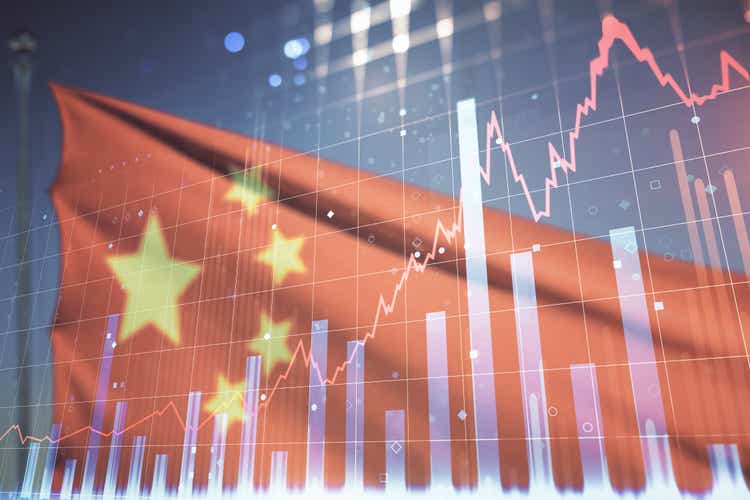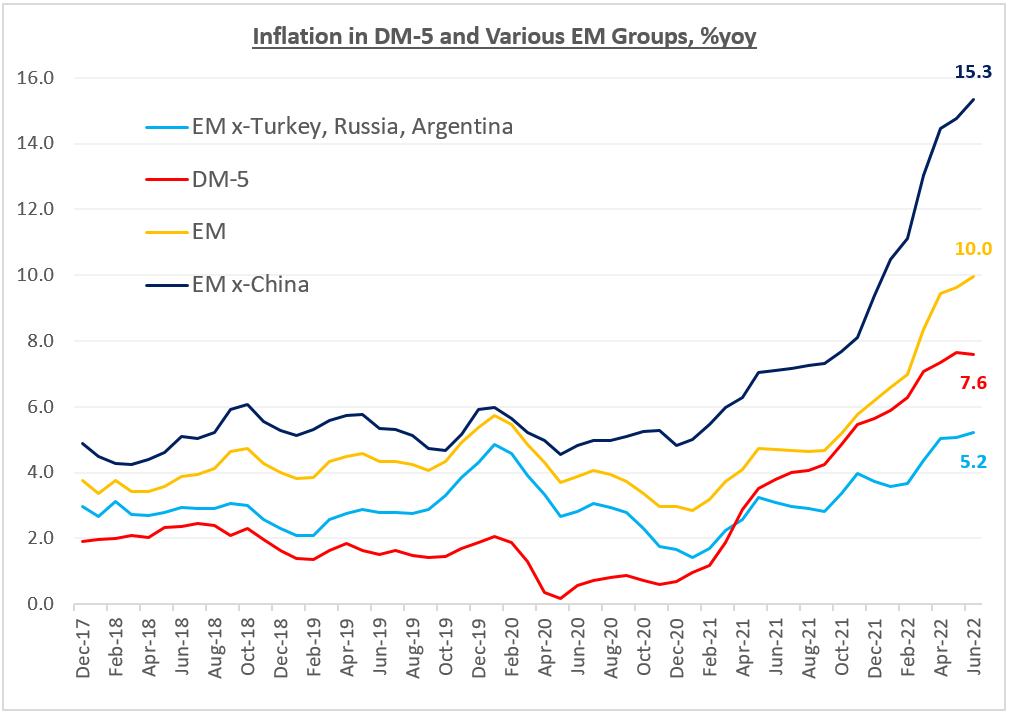Igor Kutyaev
China’s credit aggregates signal that the stimulus is real and bringing results. Can the momentum be sustained, and what are the implications for the renminbi and EM inflation?
China Credit, Money Supply, Growth
China’s credit aggregates hit several right notes in June. Both the new yuan loans and total social financing were stronger than expected and well above the multi-year seasonal ranges. Corporate bond issuance flipped into positive from a sequential decline in May. A proxy for mortgages (long-term household lending) recovered nicely, and long-term and medium-term corporate lending showed the first positive annual growth (based on a 3-month moving average) since July 2021. The numbers strongly suggest that the stimulus is real and bringing results. China’s economic surprise index also improved visibly in the past month. So, is it a good time to finally upgrade China’s near-term growth projections (which were cut to 1.5% year-on-year for Q2, 4.58% for Q3, and 5% for Q4, respectively)? One big problem here is that the encouraging credit numbers were released at the same time as reports about new COVID outbreaks in China’s major cities. This continues to pose a major downside risk, especially for consumption.
Diverging China-U.S. Growth Trends?
If the COVID situation can be contained without further downward growth revisions, the diverging near-term growth outlooks in China and the U.S. (where the market prices in a growing risk of recession) can create interesting opportunities for the renminbi. The negative differential between government bond yields in China and the U.S. narrowed a bit lately and can decline further if the current growth trends persist. If there are no negative surprises on the outflows front, this can lead to the renminbi strength vs. U.S. dollar going forward.
China and EM Inflation
Another related question is if – and this is still a big “if” – China’s rebound is for real, what impact will this have on inflation. China is the only major emerging market where headline inflation is still below the target – even though it surprised to the upside in June (2.5% year-on-year). The supply-side nature of China’s stimulus should help to cap inflation pressures in the future. But we keep an eye on the price of pork, which is rebounding on a year-on-year basis, creating upside inflation risks. Low inflation in China helped to keep emerging markets (EM) “average” inflation (once we exclude such outliers as Turkey, Russia, and Argentina) well below developed markets (DM) after the pandemic (light blue line on the chart below). Will this still be the case going forward? Stay tuned!
Chart at a Glance: China Is Key Not Only For EM Growth But Also For EM Inflation
VanEck Research; Bloomberg LP
EM – Russia, Turkey, South Africa, Poland, Czech Rep, Hungary, Romania, Israel, Argentina, Brazil, Mexico, Chile, Colombia, Peru, China, India, Indonesia, Korea, Malaysia, Philippines, Thailand
DM – US, UK, Germany, Canada, Japan
PMI – Purchasing Managers’ Index: economic indicators derived from monthly surveys of private sector companies. A reading above 50 indicates expansion, and a reading below 50 indicates contraction; ISM – Institute for Supply Management PMI: ISM releases an index based on more than 400 purchasing and supply managers surveys; both in the manufacturing and non-manufacturing industries; CPI – Consumer Price Index: an index of the variation in prices paid by typical consumers for retail goods and other items; PPI – Producer Price Index: a family of indexes that measures the average change in selling prices received by domestic producers of goods and services over time; PCE inflation – Personal Consumption Expenditures Price Index: one measure of U.S. inflation, tracking the change in prices of goods and services purchased by consumers throughout the economy; MSCI – Morgan Stanley Capital International: an American provider of equity, fixed income, hedge fund stock market indexes, and equity portfolio analysis tools; VIX – CBOE Volatility Index: an index created by the Chicago Board Options Exchange (CBOE), which shows the market’s expectation of 30-day volatility. It is constructed using the implied volatilities on S&P 500 index options.; GBI-EM – JP Morgan’s Government Bond Index – Emerging Markets: comprehensive emerging market debt benchmarks that track local currency bonds issued by Emerging market governments; EMBI – JP Morgan’s Emerging Market Bond Index: JP Morgan’s index of dollar-denominated sovereign bonds issued by a selection of emerging market countries; EMBIG – JP Morgan’s Emerging Market Bond Index Global: tracks total returns for traded external debt instruments in emerging markets.
The information presented does not involve the rendering of personalized investment, financial, legal, or tax advice. This is not an offer to buy or sell, or a solicitation of any offer to buy or sell any of the securities mentioned herein. Certain statements contained herein may constitute projections, forecasts and other forward-looking statements, which do not reflect actual results. Certain information may be provided by third-party sources and, although believed to be reliable, it has not been independently verified and its accuracy or completeness cannot be guaranteed. Any opinions, projections, forecasts, and forward-looking statements presented herein are valid as the date of this communication and are subject to change. The information herein represents the opinion of the author(s), but not necessarily those of VanEck.
Investing in international markets carries risks such as currency fluctuation, regulatory risks, economic and political instability. Emerging markets involve heightened risks related to the same factors as well as increased volatility, lower trading volume, and less liquidity. Emerging markets can have greater custodial and operational risks, and less developed legal and accounting systems than developed markets.
All investing is subject to risk, including the possible loss of the money you invest. As with any investment strategy, there is no guarantee that investment objectives will be met and investors may lose money. Diversification does not ensure a profit or protect against a loss in a declining market. Past performance is no guarantee of future performance.
Editor’s Note: The summary bullets for this article were chosen by Seeking Alpha editors.


Be the first to comment